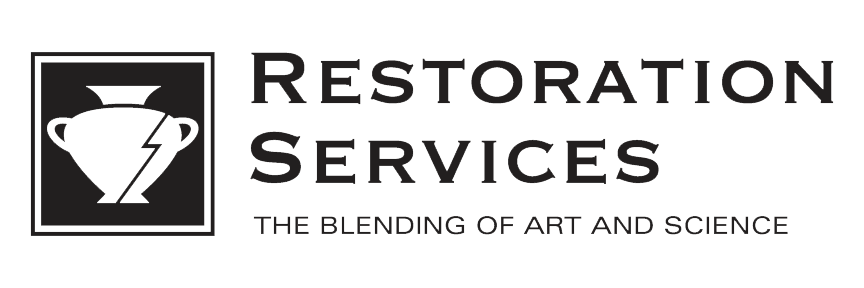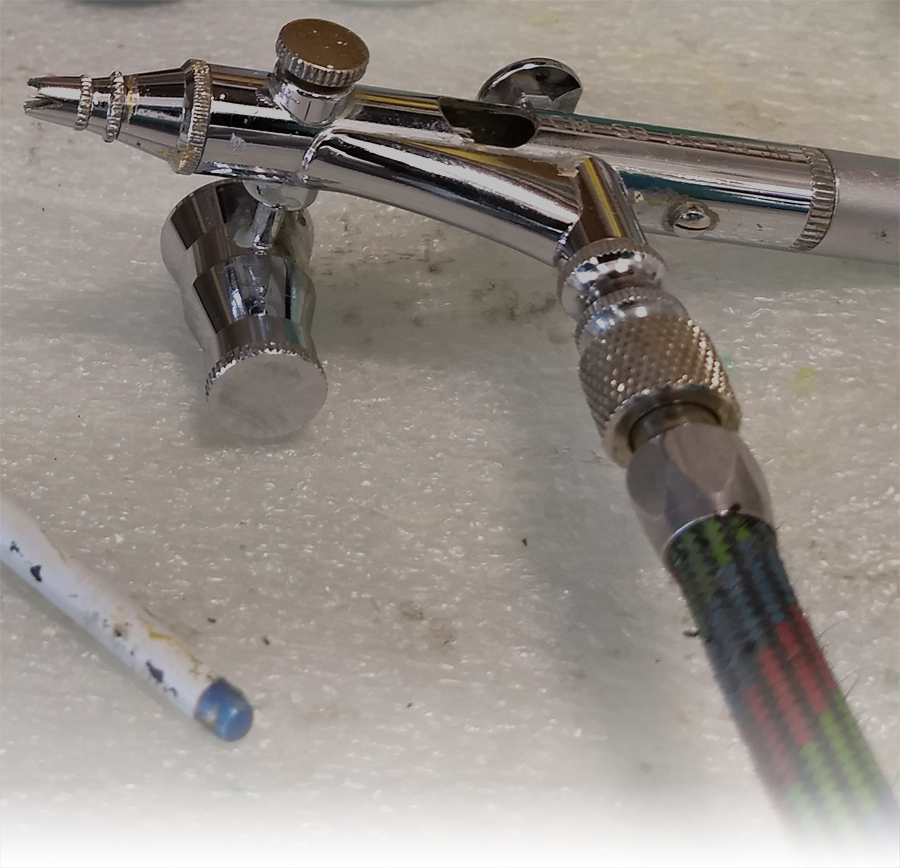Glossary of Terms
Restoration can feel like a mystery for anyone not familiar with the process. Here is a list of terms and definitions that will help you to speak our language. Feel free to contact us if you are interested in discussing any of our materials or techniques in depth.
| Airbrush | We custom-match lightfast colors to blend the restoration into the rest of the piece. This is either applied as a final coat of Paraloid B-72 or as an integral part of our invisible restoration process. |
| Bleach | We can bleach out stains in various materials with highly concentrated hydrogen peroxide, acids, or detergent. This can be a lengthy process and isn’t always guaranteed to work. |
| Chips | When brittle materials are damaged, small chips can easily be lost or ground into dust. Whatever the material may be, we have a way of filling them in. |
| Clear Coat | A durable finish can be obtained with an application of Paraloid B-72 or urethane clear coat. The latter can be used to achieve a top coat that blends seamlessly into the original surface and is essential to obtaining an invisible finish. |
| Color Match | We painstakingly blend lightfast pigments and dyes into our acrylics and optical epoxies to match the color of glass and ceramics. This technique is very helpful when a repair needs to be durable and safe for use, allowing us to forgo any application of paint on the surface. |
| Display Only | Whether due to the use of water-based adhesives to reduce staining or a painted surface, most of our repairs are for display only. Accommodations can be made for use upon request. |
| Epoxy | We use various resin-based, two-part epoxies. Our most widely used optical epoxies, Epo-Tek 301 and Hxtal NYL-1, are non-yellowing and very closely match the refractive index of most glass. They make cracks practically disappear. We have developed a range of specialized applications of these epoxies to aid us in the restoration of glass and ceramics. |
| Etch | Etching glass will increase the strength of the repair. It is a process utilized when a piece is particularly delicate or load-bearing. |
| Fill | If there are missing chips or pieces, we can fill them in. The material used varies from piece to piece. Our primary goal is to recreate the original shape and surface as a foundation for any airbrushing or touch up required. |
| For Use | Items can be restored for use upon request. Measures can be taken to ensure that a vase is watertight or a glass is safe to drink from. The result may be slightly more visible but it will be durable and safe. Repairs for use are not oven, microwave, or dishwasher safe. |
| Fugitive | Extra care needs to be taken when working with a fugitive surface. It’s often the first thing restorers overlook and can lead to disastrous consequences. Gilding, patina, or flaking paint can easily be damaged or destroyed if appropriate precautions are not taken. We make every effort to respect and conserve the original integrity of any item we work on. |
| Gild | Missing gold can be restored in a number of ways. We can match various types of gold leaf, touch up repairs with custom-mixed, mica-based paints, recreate lusters with our epoxy gilding technique or invisible restoration, and even provide a traditional gold repair upon request. |
| Invisible | Beyond museum quality, our invisible restoration can return items to their former glory. With great attention to detail we can make things look like new again. Only the well-trained eye of an expert would be able to differentiate between our invisible restoration and an undamaged item. |
| Kintsugi | A traditional method of repair that highlights the restoration with gold powder, kintsugi embraces the wabi-sabi aesthetic. A repair of this nature will only be done upon special request. |
| Lacquer | Specially formulated lacquers can be applied to silver and bronze alloys to inhibit tarnishing and corrosion. To use anything else would be a fool’s errand. This step is often taken to preserve art and antiquities or to eliminate the necessity to polish sterling silver. |
| Mold and Cast | Oftentimes, we will opt to take a mold of an intact portion of an item in order to cast a missing piece in place. This way we can reproduce the texture and surface detail while ensuring a perfect bond between the two materials. |
| Pin | Sometimes we may want to avoid damaging a patina or an item may need additional structural support. In either case, we may need to drill into the broken surface to install pins. Any evidence of the pins will be completely hidden. This step is only taken when completely necessary so as to avoid damaging the piece in any way. |
| Polish | Polishing usually refers to the final step when finishing silver, color-matched fillings, or the clear coat applied to the surface of glass or invisible repairs. |
| Previous Repair | We will make sure to note if there is evidence of a previous repair. Most of the time we opt to remove and redo a previous repair to eliminate any unsightly mistakes and ensure the durability of our repair. There is no adhesive that can stand in our way. It’s not too late for us to take over if you find yourself stuck halfway through a repair of your own. |
| Epoxy Putty | This versatile material can be used as a filler or sculpted to develop the final surface before airbrushing and finishing the repair. The fact that it can be tinted with powdered pigments makes it especially useful when sculpting missing parts for outdoor sculptures. |
| Refinish | If there is ever a need to solder, braze, or remove corrosion, we can refinish most metals to match the original surface. Plating, airbrushing, or patination may be applied depending on what will provide the best outcome. |
| Replate | We can spot-plate worn silver and gold plating. If entire pieces need to be fabricated or re-plated, we will often work with a local foundry or silversmith to meet your needs. |
| Seal | Items don’t need to be completely broken in order to be addressed. We can seal cracks before things get worse and make vases and teapots watertight again. Cracks in glass will almost disappear once they are sealed with our optical epoxy. |
| Solder | Solders have specific melting points and applications depending on the metal alloys that are being repaired. We make every effort to preserve the original patina when appropriate and will not use soldering or brazing techniques if there is any danger of causing irreversible damage. |
| Stain | Staining can often be addressed by bleaching a piece. Though, previous repairs and epoxies can cause permanent staining. We always suggest repairing items for display only using water-based adhesives to avoid staining porous materials. We will notify you before proceeding if we feel that staining may be a concern. |
| Strip | In rare cases, we may need to completely remove a finished surface before moving ahead with a restoration. A process similar to the removal of previous repairs is used and every effort is taken to preserve the piece as best as possible. The goal is to clean the item without damaging it. |
| Touch Up | Our hand-mixed paints and pigments are applied by hand, often in conjunction with airbrushing to diminish the visibility of the repair. This is usually the step between reassembly and an invisible repair and is what you will often see in the display cases of museums. |
| Wax | Waxes can be applied to coat and protect items. The industry standard micro-crystalline wax is a widely used and reversible finish that can be applied to fine furniture without disturbing the finish. We also use Cosmolloid 80H as a filler in very specific circumstances. It can be tinted to match and is flexible enough to prevent any damage that may result by the use of conventional adhesives or fillers. |


